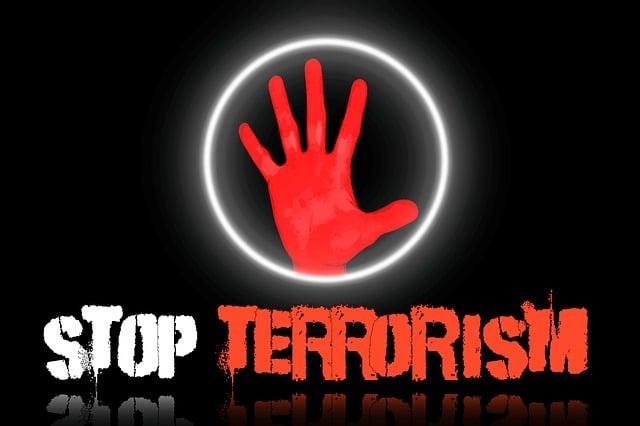In the heart of South Asia lies Pakistan, a land of vibrant cultures, rich history, and striking landscapes. Yet, beneath its beauty lies a troubling undercurrent—violence that has shaped the nation’s narrative for decades. To understand the roots and impact of this turbulence is to embark on a complex journey through the tangled webs of political conflict, sectarian strife, and socio-economic instability. From the haunting echoes of historical grievances to the contemporary challenges faced by its citizens, the story of violence in Pakistan is not merely one of chaos but rather a poignant reflection of deeper societal issues and unresolved tensions. In this article, we will delve into the multifaceted nature of violence in Pakistan, exploring its origins, manifestations, and the profound effects it has on both individuals and the broader community while seeking a path toward understanding and resolution.
Exploring Historical Factors Behind Violence in Pakistan
Pakistan’s history is a tapestry of complex socio-political dynamics, serving as a backdrop for the violence that continues to plague the nation. Key historical factors include:
- The Partition of 1947: The violent division of British India led to massive population displacement, sectarian strife, and lasting animosities that have reverberated through generations.
- Military Rule: Several military coups have disrupted democratic processes, breeding a culture of oppression and instability that fosters violence against dissent.
- Ethnic and Sectarian Divides: Pakistan is home to diverse ethnic groups and religious sects, leading to conflicts intensified by political manipulation and historic grievances.
Moreover, the external factors intertwined with Pakistan’s conflicts amplify the situation. The influence of foreign powers, particularly in the context of Afghan conflicts and the drone warfare campaign, has resulted in casualties and anti-Western sentiments. The ongoing struggles can be encapsulated in the following table:
| Factor | Impact |
|---|---|
| Foreign Interventions | Heightened anti-foreign sentiment and militancy. |
| Economic Disparities | Increased frustration, leading to violent uprisings and extremism. |
| Judicial Inequities | Impunity for violence exacerbates the cycle. |

Socioeconomic Disparities: A Catalyst for Conflict
In regions where wealth and resources are concentrated in the hands of a few, the divide between the affluent and the impoverished becomes starkly visible. This economic inequality often breeds resentment and distrust among communities, as individuals grapple with their inability to access basic necessities like education, healthcare, and employment opportunities. When basic rights and services are perceived as privileges of the elite, the resultant social fracture can lead to unrest. The frustration stemming from deprivation can manifest in various forms, including protests, riots, or even organized violence, as marginalized groups seek to assert their presence in a society that has largely turned its back on them.
Addressing these disparities requires a multifaceted approach that not only promotes economic growth but also ensures equitable distribution of resources. It is critical to implement community-driven programs that foster inclusion and opportunity. Key strategies may include:
- Investing in Education: Strengthening educational infrastructure in underprivileged areas.
- Creating Job Opportunities: Launching initiatives that stimulate local economies.
- Access to Healthcare: Providing basic healthcare facilities to reduce health inequalities.
- Encouraging Political Participation: Ensuring that marginalized voices have a platform in decision-making processes.
By prioritizing these aspects, societies can pave the way for greater harmony and reduce the likelihood of conflict arising from socioeconomic divides.

The Role of Extremism in Shaping Societal Norms
In examining the impact of extremism on societal norms, it becomes evident that ideologies rooted in radical beliefs not only foster a climate of fear but also reshape the cultural landscape. Various extremist groups often utilize propaganda to instill their beliefs and practices into the social fabric, creating an environment that normalizes violence and intolerance. This infiltration can lead to significant shifts in the collective mindset, with individuals and communities adapting their values in response to fear and societal pressure. When violence is perceived as a viable means to achieve political or social ends, it erodes the foundational principles of empathy, understanding, and coexistence, paving the way for a culture of hostility.
The effects are not limited to immediate violence; they extend to the marginalization of differing viewpoints and the suppression of dialogue. Societal norms begin to shift, emphasizing conformity and discouraging dissent or critical thinking. This trend can manifest in various spheres, including education, media, and governance, where extremism undermines democratic processes and promotes a binary worldview. Furthermore, as this atmosphere becomes prevalent, communities may find themselves reinforcing cycles of violence, with younger generations adopting extremist narratives as a reaction to their environment. The intricate dance between extremism and societal norms highlights the pressing need for proactive measures to cultivate resilience and inclusivity among the populace.

Pathways to Peace: Implementing Strategies for Sustainable Change
The road to achieving sustainable change amid the backdrop of violence in Pakistan necessitates a multi-faceted approach that addresses underlying issues and promotes dialogue among affected communities. One effective strategy is the empowerment of local communities, which has proven crucial in restoring peace and rebuilding trust. Engaging community leaders in discussions about economic development, education, and health can foster collaboration and create a sense of ownership over the peace process. By prioritizing community-based solutions, the potential for long-lasting transformation increases as it aligns with the real needs and aspirations of the people.
Moreover, establishing comprehensive educational programs that emphasize critical thinking, conflict resolution, and tolerance can help mitigate the transmission of violent ideologies. Such initiatives may include:
- Workshops and seminars that promote dialogue between diverse groups.
- Peer mediation programs in schools to address conflicts constructively.
- Collaboration with NGOs focused on peacebuilding efforts across the region.
Additionally, implementing a structured framework for addressing grievances can facilitate a smooth reconciliation process. Incorporating stakeholder feedback into policy planning allows for flexibility and responsiveness, ensuring that efforts are continuously aligned with community needs. By fostering a culture of inclusivity and engagement, there’s an opportunity to pave the way towards sustainable peace in Pakistan.
Future Outlook
As we draw the curtain on our exploration of violence in Pakistan, it becomes clear that this complex issue is deeply interwoven with the nation’s historical, cultural, and socio-economic fabric. The roots of violence are not merely the product of isolated incidents or specific groups; they reflect a broader narrative shaped by decades of conflict, inequality, and systemic challenges. Understanding this narrative is crucial for informing future dialogues and interventions aimed at fostering peace and stability.
As we move forward, it is essential to recognize that the impact of violence extends far beyond immediate consequences. It ripples through communities, affecting generations and hindering progress across multiple sectors—from education to economic development. Yet, amidst the challenges, a resilient spirit thrives; many individuals and organizations are dedicated to sowing the seeds of change and advocating for a more peaceful society.
In acknowledging the complexities of violence in Pakistan, we open the door to a more nuanced understanding, one that honors those affected and seeks to address the underlying causes. In doing so, we pave the way for constructive dialogue, informed policy-making, and collective action that can ultimately lead to a brighter, more harmonious future. The journey toward understanding is just the first step; the challenge now lies in harnessing this understanding to transform the narrative of violence into one of hope, healing, and resilience.



